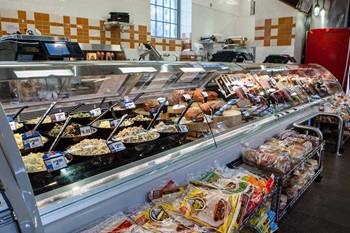By Rick Stein, Vice President, Fresh Foods, FMI

As Americans brace for a challenging winter and once again spend more time at home, fatigue is setting in – and it isn’t just about the virus. Remember those early days of quarantine, when people were sharing photos of homemade breads, whipped coffees and hand-rolled pasta? You’re not seeing those as often since the thrill of cooking from scratch has faded.
This comes at a time when holiday cookie season is normally ramping up and families would be doling out assignments for celebratory feasts. If there is less enthusiasm about cooking meals at home for different dayparts on multiple days of the week, there is also a somewhat dampened outlook for traditional holiday repasts and treats.
Food retailers can come to the rescue – as they have throughout this year’s pandemic – with solutions. In addition to being a resource for household staples and health and wellness products, retailers can provide ready-to-cook, ready-to-prepare and ready-to-eat offerings that make meals easier. Now is a good time to (once again) adapt and promote foodservice at retail programs as a solution for cooking fatigue and a different kind of holiday season.
The need for such assistance in the home kitchen is clear. According to FMI’s recent report, The Power of Foodservice at Retail, consumers say the biggest challenge in food preparation and cooking at home is simply not being in the mood to cook. Another sentient that paves the way for retail foodservice solutions is the fact that nearly half (47%) of shoppers say that they have a hard time coming up with new meal ideas.
To reach consumers who don’t feel like cooking, retailers can market their prepared food solutions and partial meal solutions as a restaurant might do, focusing on availability, variety and convenience in the form of easy in/easy out shopping, pickup or delivery. Packaged meals are appealing to shoppers, with The Power of Foodservice at Retail research showing that 46% of shoppers like the idea of hot prepackaged foods and 31% prefer having meals in a prepackaged format rather than having store employees serve the food.
In addition to full meals, retailers can give home cooks a lift in other ways. The Power of Foodservice at Retail reveals that a majority of people (58%) are combining items they make from scratch with semi- and fully-prepared items, including sides and salads like bagged salads or re-heatable mashed potatoes. Making those items available and easy to find online or in-store makes a food retailer a go-to source.
Retailers should feel confident in both the possible range of offerings and in their unique position. Retail foodservice programs have some definite advantages with consumers struggling with what to make for breakfast, lunch and dinner at home: families can buy meals for their household at a lower price point than many restaurants that offer carry out, for example. In addition, shoppers can order or pick up other needed goods while taking care of meals, cutting down on errands and making their life easier.
These benefits especially resonate during the holidays, when consumers are planning on smaller gatherings and seeking ways to alleviate stress. Whether it’s a turkey or prime rib roast to go, a platter of cookies or containers of heat-and-eat side dishes, retail foodservice items can alleviate consumers’ cooking fatigue and, along the way, improve a part of their life. That’s something shoppers will remember when 2021 rolls out in a hopefully different way.


 Industry Topics address your specific area of expertise with resources, reports, events and more.
Industry Topics address your specific area of expertise with resources, reports, events and more.
 Our Research covers consumer behavior and retail operation benchmarks so you can make informed business decisions.
Our Research covers consumer behavior and retail operation benchmarks so you can make informed business decisions.
 Events and Education including online and in-person help you advance your food retail career.
Events and Education including online and in-person help you advance your food retail career.
 Food Safety training, resources and guidance that help you create a company food safety culture.
Food Safety training, resources and guidance that help you create a company food safety culture.
 Government Affairs work — federal and state — on the latest food industry policy, regulatory and legislative issues.
Government Affairs work — federal and state — on the latest food industry policy, regulatory and legislative issues.
 Get Involved. From industry awards to newsletters and committees, these resources help you take advantage of your membership.
Get Involved. From industry awards to newsletters and committees, these resources help you take advantage of your membership.
 Best practices, guidance documents, infographics, signage and more for the food industry on the COVID-19 pandemic.
Best practices, guidance documents, infographics, signage and more for the food industry on the COVID-19 pandemic.
